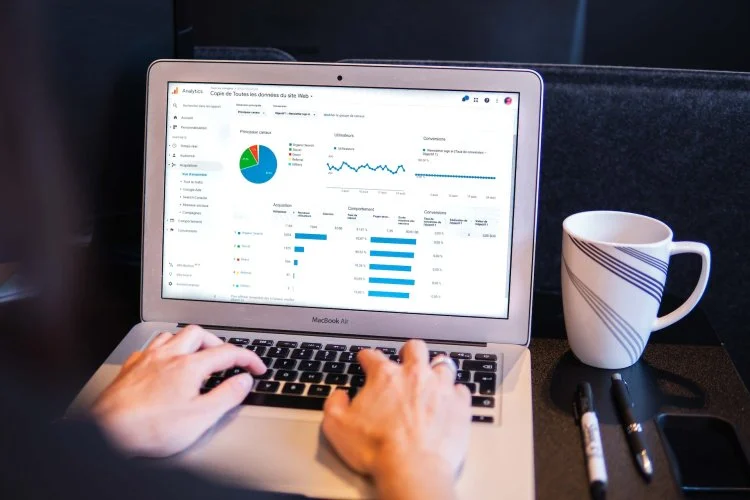What is online marketing?
Digital marketing, also known as online marketing, involves using internet-based platforms to convey a company's brand, products, or services to potential customers.

Digital marketing, also known as online marketing, involves using internet-based platforms to convey a company's brand, products, or services to potential customers. The strategies and techniques employed in digital marketing encompass email promotions, social media engagement, advertising, search engine optimization (SEO), and more. The primary goal of online marketing is to engage with potential customers through the online platforms they already frequent, such as browsing, searching, shopping, and socializing. Essentially, it's about reaching customers where they are.
Online marketing offers distinct advantages and challenges as it primarily relies on digital channels to convert online visitors into actual customers.
In contrast, offline marketing differs from online marketing by using various methods for promotional efforts. Traditional offline marketing traditionally made use of mediums like print media, billboards, television, and radio ads. Transitioning these offline customers into the online world can be tricky since it requires a shift from one medium to another, often involving the move to a website.
In the pre-online marketing era, the cost of marketing products or services was often high and hard to measure. Think about television ad campaigns, which relied on consumer focus groups to assess brand recognition. Nowadays, anyone in business can engage in online marketing, creating customer acquisition strategies with minimal or no expenses. Leading online marketing tools and services also provide the ability to experiment and optimize campaigns, improving their effectiveness and enhancing return on investment (ROI).
Benefits of online marketing
Using digital channels for marketing a business or product offers a significant advantage in terms of measuring campaign effectiveness. It also allows for the evaluation of how visitors, obtained from various digital marketing channels, interact with a digital interface. Furthermore, those visitors who convert into paying customers can undergo a detailed analysis to pinpoint precisely where and how their online journey led to a purchase.
Web or mobile app analytics tools are indispensable for:
- Determining which digital marketing channels and campaigns are the most cost-effective for customer acquisition. This assessment is based on the conversion rate from visitors to customers and the associated cost of acquiring those visitors.
- Identifying the channels that excel in both acquiring customers and fostering greater customer lifetime value. For example, email marketing and social media often emerge as effective channels for encouraging repeat purchases and sustaining customer engagement.
- Recognizing customer segments that exhibit robust engagement behavior and offer substantial potential for upselling opportunities. This is particularly relevant in the case of software or mobile apps, where it's typically easier to market additional, higher-value products to customers who have already engaged with your brand and are familiar with it.
Common online marketing tools
There are a number of tools that can be used to build and maintain a robust digital marketing program:
- Email marketing or marketing automation
- Social media marketing
- Search engine optimization (SEO)
- Search engine marketing (SEM)
- Online events & webinars
- A/B testing & website optimization
- Content marketing
- Web analytics like Google Analytics 4
- Customer relationship management (CRM) like Salesforce
- Content management system (CMS)
- Pay-per-click (PPC) advertising like Google Ads or Linkedin Ads
- Affiliate marketing
Examples of online marketing
Here are some instances of digital marketing campaigns:
- Canon employs search engine advertising on Google and Bing, targeting keywords related to “photography.” This strategy aims to reach a relevant audience and drive traffic to a specific webpage, promoting their cameras.
- Whole Foods collects email addresses through its website to compile email lists. These lists are then used to promote new products, sales, and in-store events to their subscribers.
- Dove produces video advertisements and shares them across social media platforms such as Facebook and Twitter. This approach seeks to stimulate positive discussions about their brand and products among their audience.
- Bite Beauty collaborates with influencers to endorse a new lipstick to their target audience of discerning beauty enthusiasts.
While digital marketing opens up a plethora of opportunities for online businesses to enhance their online presence and engage with their audiences, it also comes with specific challenges. To begin with, the virtual delivery of messages and content in digital marketing can sometimes seem impersonal. Therefore, marketers need to customize their digital marketing strategies to be in sync with a profound understanding of their customers' needs and preferences.
Furthermore, online marketing can be fiercely competitive and oversaturated. Although it enables companies to reach both local and global markets, the sheer number of businesses promoting their products and services online can make capturing the attention of visitors a formidable task. To overcome this hurdle, marketers need to strike a balance between establishing a unique value proposition (UVP) and defining their brand voice, all while experimenting with marketing campaigns across different channels. Moreover, it's crucial to communicate audience insights and campaign performance to the marketing management team to gain widespread support within the organization.
How to start marketing online
The first thing you should do when starting your online marketing journey is to evaluate your business goals and make sure they can be measured. Do you want to gain 100 new customers, generate 1,000 leads for your B2B sales pipeline, or gather 10,000 followers on your social media accounts? It's crucial to establish a way to track your advancement toward these defined objectives.
Subsequently, you need to determine how to build an online presence that aligns with your efforts to achieve these targets and create a suitable digital marketing plan for these platforms. Here are some key factors to take into account:
- Establish an Ecommerce Site: Setting up an ecommerce website allows you to either start selling your products online or at least list them for potential customers to view.
- Create Valuable Content: Building awareness and attracting subscribers can be achieved by launching a blog or podcast. Crafting excellent content and optimizing it for search engines (SEO) is crucial to ensure it’s easily discoverable.
- Leverage Customer Advocacy: Partner with satisfied customers willing to champion your products. Creating case studies or infographics featuring their experiences can serve as compelling social proof for prospective customers evaluating your company.
- Develop a Landing Page: Construct a simple landing page featuring a lead capture form. This is particularly effective for B2B companies as it aids in brand development and traffic generation.
- Implement Analytics: Utilize a basic analytics platform such as Google Analytics 4 (which is free) to commence the measurement of your marketing efforts and their alignment with your initial objectives.
When you’re ready to initiate your online marketing endeavors, involving your team members and marketing management team and keeping track of all the tasks can be challenging. Consider utilizing a (free) Content Marketing Platform to streamline task management and facilitate content publication.
How to start with web analytics
A well-structured digital marketing plan doesn’t just begin by outlining goals; it also includes a methodology for monitoring progress towards those objectives. It’s crucial to consider metrics before commencing your efforts because it’s generally not feasible to retroactively gather historical data or measure online activities after the fact.
Here are the key steps to follow:
- Create a Measurement Plan: Define the actions a potential customer might take on your website, and ideally, map these actions along a customer journey. Typical actions include clicking to your website from a search engine results page or filling out a contact form.
- Implement Web Tracking Tools: Set up a web tracking tool, and since over half of all websites use it, Google Analytics is a widely popular choice. It’s user-friendly and requires minimal setup. This tool helps you track web metrics efficiently.
- Leverage Web Analytics: Utilize web analytics to examine customer behavior, conduct market research, and explore visitor demographics. Web data is invaluable for making informed marketing decisions, including pricing strategies and campaign planning to target the right audiences.
- Enhance User Experience: Go beyond standard web analytics by incorporating techniques such as surveys, user testing, and face-to-face conversations to gain a deeper understanding of the overall user experience. This helps in identifying areas for improvement and optimization.
- Personalization and Audience Segmentation: Take your data analysis a step further by implementing personalization strategies and segmenting your audiences. This makes the collected data actionable for business owners, enabling more targeted and effective marketing campaigns.
By adhering to these steps and maintaining a focus on measurement and data analysis, your digital marketing plan can be more effective and adaptable to evolving customer needs and market trends.
Optimizing your online marketing
Online marketing provides a unique advantage when it comes to optimizing and evaluating performance. This advantage stems from the substantial control it grants over the digital experience, a level of control that is considerably more challenging to attain in offline marketing.
Usually, businesses concentrate on fine-tuning their digital campaigns for search engines, primarily through Search Engine Optimization (SEO). This involves using visitor data such as search traffic and demographic information to create content that is not only more relevant but also engaging. It's crucial to note that this optimization should prioritize enhancing the reader's experience rather than solely tailoring content for search engines. Search engines have become adept at identifying websites that genuinely offer valuable information to users, and any attempts to manipulate rankings can result in penalties, including lower search engine rankings.
For businesses, depending on their target customer demographics, they may opt to employ social media campaigns to promote their products and services. In the realm of social media, the focus should be on actively engaging with the audience and showcasing the functionality of products. Social platforms, known for their interactivity, also serve as excellent arenas for soliciting customer feedback and obtaining endorsements through product reviews.
When implementing changes to improve the performance of online marketing campaigns, it's wise to closely monitor how these adjustments impact the customer's journey. Tools such as A/B testing can offer more effective measurements, providing a higher degree of certainty regarding their influence on customer behavior.
Moreover, consider the potential synergy between online and offline marketing strategies. Although online customer behavior can differ significantly from in-store or offline marketing, many businesses have achieved success by bridging the gap between these two domains. They achieve this by promoting in-store offers through online channels and vice versa, ensuring a coherent and comprehensive marketing approach that caters to a broad spectrum of customer preferences and behaviors.
What's Your Reaction?

































